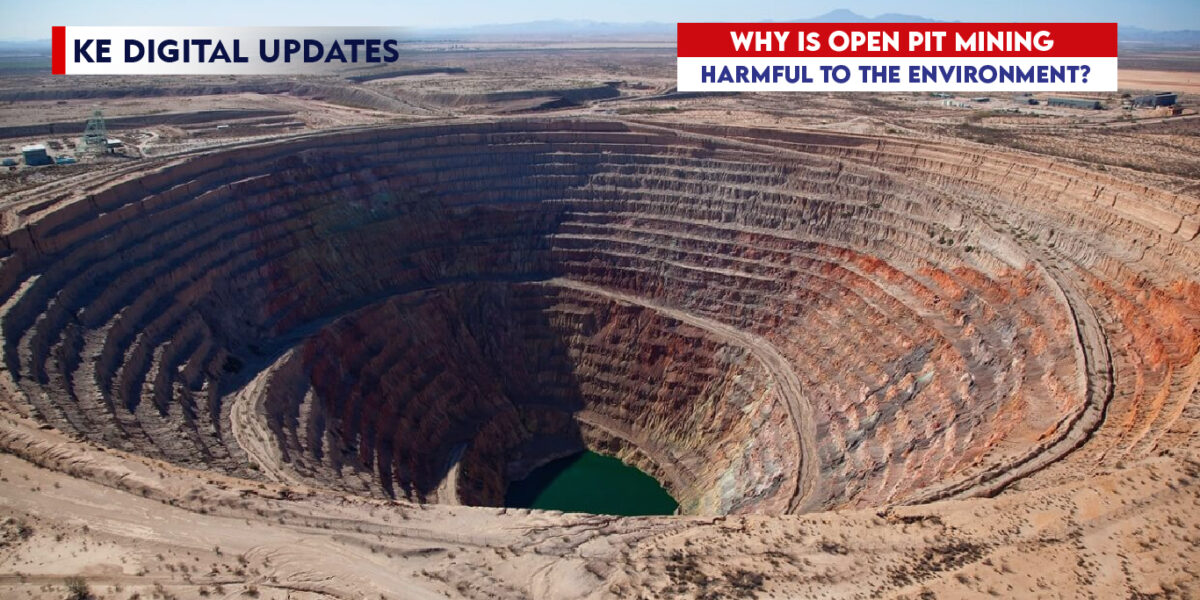Open pit mining is the most useable method for mineral ores except coal. The cone shape and the concave surface of the mine are common to explore the mineral ores in horizontal expansions. A single type of machinery is used while removing the overburdens to extract and transport the required ores. It devastates the environment and releases residuals 8-10 times more into the atmosphere than underground mining. The effects of open pit mining are as follows:
Deforestation:
44% of mines are located in forest areas, which requires clearing the forest and constructing roads to access the mines. Efforts to make a self-sufficient economy could have a devastating impact on the environment.
Soil Erosion:
The process of excavating the mineral ores becomes a cause of loss to the rocks and vegetation; the ultimate effect is soil erosion.
Water Contamination and Loss to Aquatic Life:
Water in open-cast mining is always highly contaminated. Acid-carrying rainwater flows into water resources like lakes and rivers, which harms aquatic life.
Air Pollution:
Surface mining releases toxic gases and materials into the air, affecting the environment and causing air pollution. Hazardous emissions from mining are more harmful than automobiles. A few minerals are responsible for releasing toxic gasses, i.e., limestone, iron ore, gold, manganese, zinc, lead, copper, chromite, bauxite, silica sand, and pyrite. Fossil fuels burned during the mining affect not only the workers’ health but also have a terrible impact on the life of the flora and fauna of the region.
Open-cast mining has more devastating effects on the environment. The use of advanced technologies can reduce the risk factors, and the promotion of recycling will decrease the need to obtain raw materials through mining.


